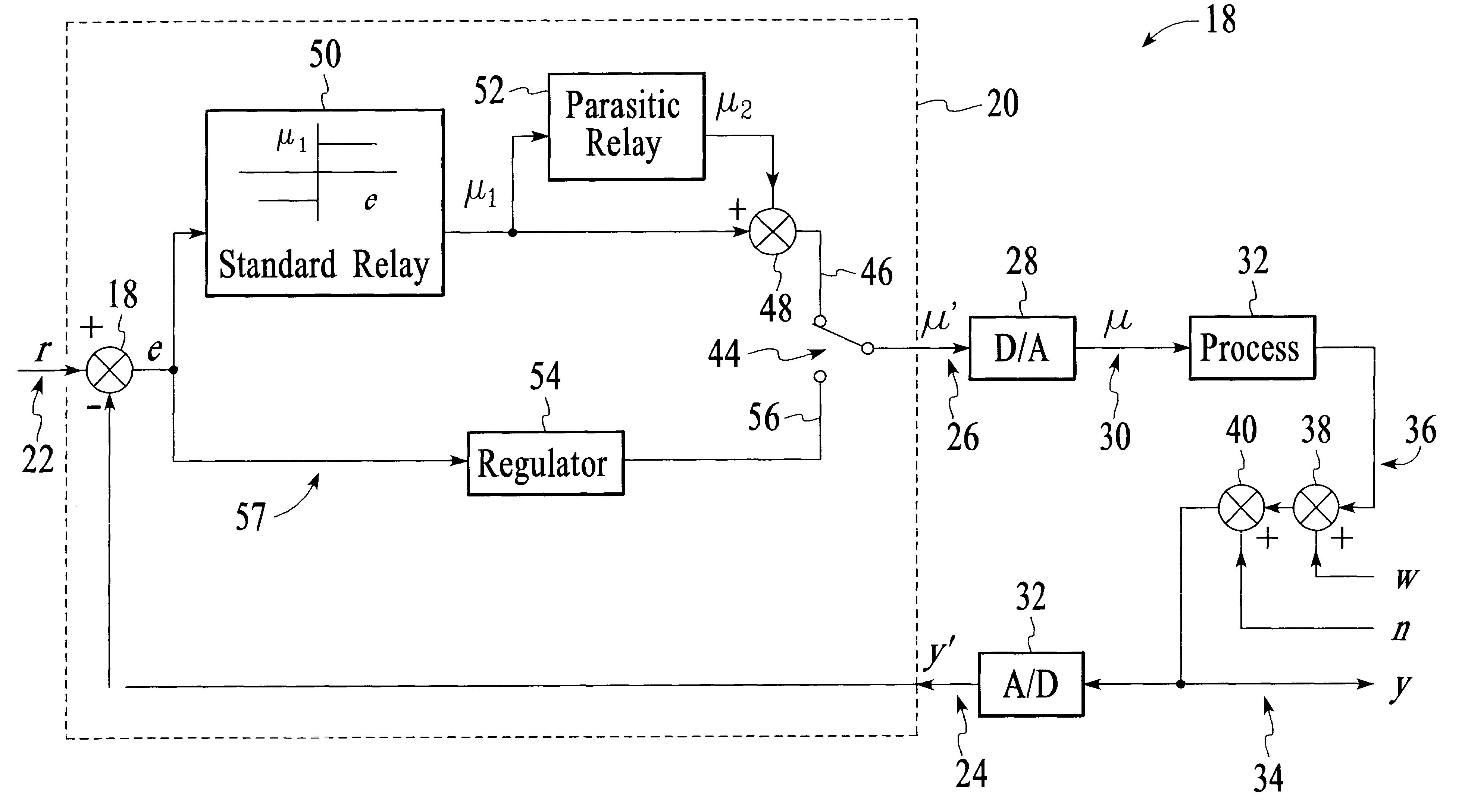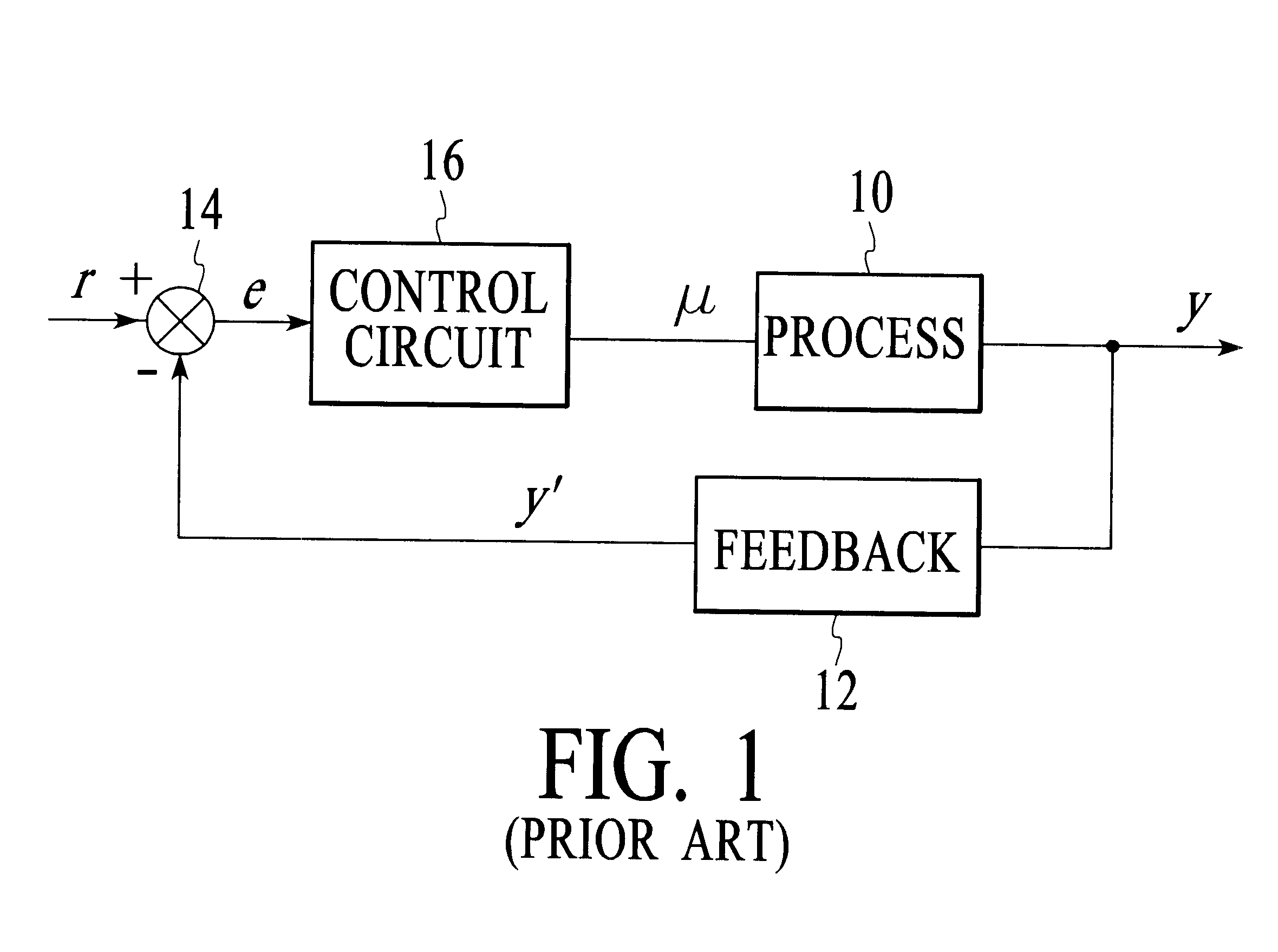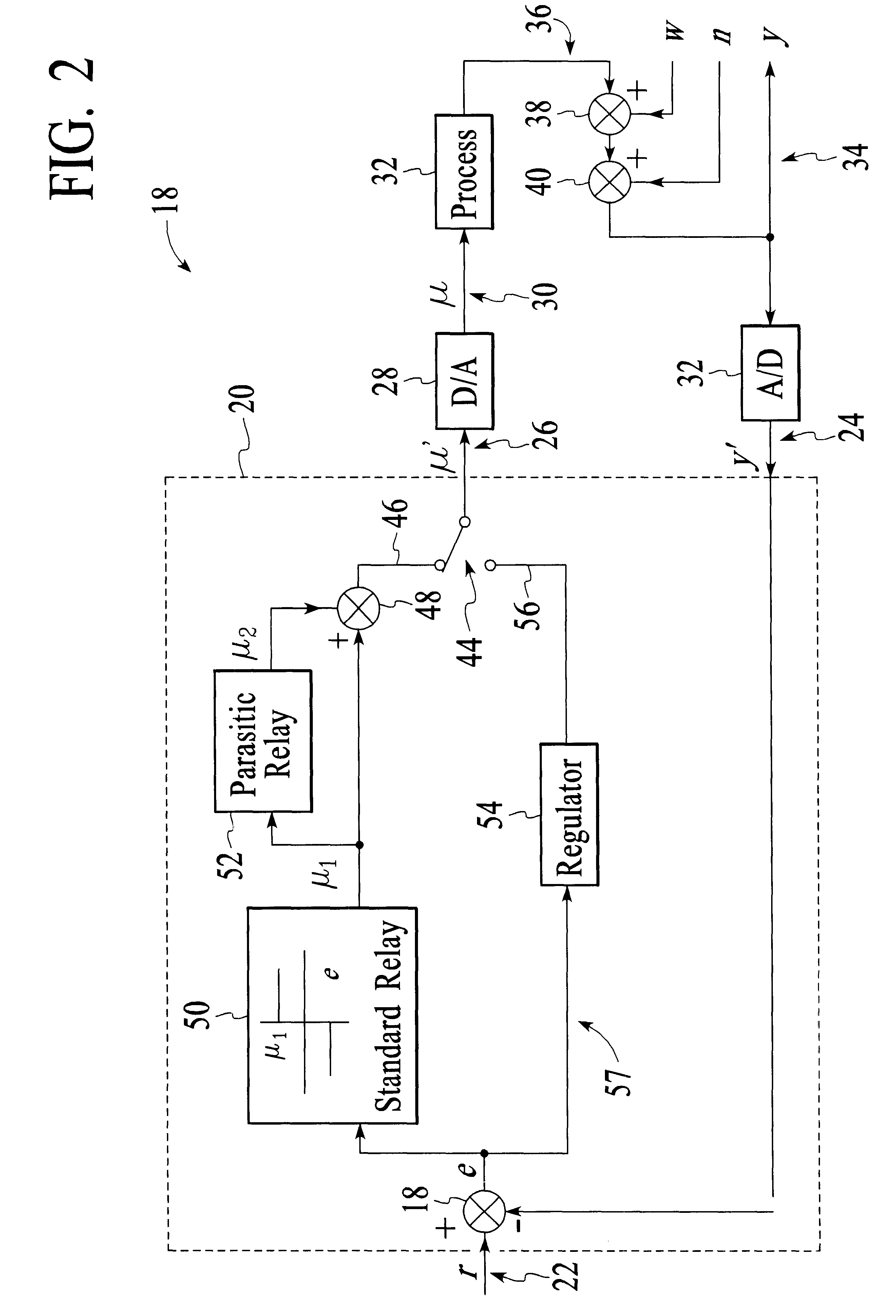Apparatus for relay based multiple point process frequency response estimation and control tuning
a multiple point process and frequency response technology, applied in process and machine control, adaptive control, instruments, etc., can solve the problems of time-consuming methods and insufficient critical point estimation for some kinds of processes
- Summary
- Abstract
- Description
- Claims
- Application Information
AI Technical Summary
Benefits of technology
Problems solved by technology
Method used
Image
Examples
case ii
sub.o.ltoreq.0.7071 or ##EQU25##
In this case, we choose the closed-loop poles as real double poles on the root-locus. Its location is selected to have a similar response speed to that of the open-loop one if it is achievable, i.e. it is before the breakaway point. Otherwise the breakaway point will be used. In order for ##EQU26##
To find the breakaway point, it is noted from eq. (14) that ##EQU27##
Hence, the breakaway point is ##EQU28##
and the corresponding gain is ##EQU29##
Therefore, the value of k should be taken as ##EQU30##
Case III. ##EQU31##
Processes with long dead time tend to produce very slow responses. In fact, the single-loop structure is inadequate in handling such processes. One possible solution is to apply the Internal Model Control (IMC) strategy to compensate for the long dead time. The controller structure is shown in FIG. 6. The model of the process is denoted as G(s) in the figure, and ##EQU32##
where the parameters a, b ,c and L are given in (7)-(8). The controller...
example
Consider the following long dead time process given by the transfer function ##EQU35##
The model of the process is found to be ##EQU36##
The PID controller is designed to be ##EQU37##
Since the process is dead time dominated, the IMC approach can be employed to speed up the response. Choosing the value of .alpha.=2 in eq. (21), the controller is computed to be ##EQU38##
The control performance of the IMC and PID controllers is also shown in FIG. 7. The performance of the IMC controller is an improvement over the PID controller. The speed is much increased, and the settling time and overshoot are significantly reduced.
PUM
 Login to View More
Login to View More Abstract
Description
Claims
Application Information
 Login to View More
Login to View More - R&D
- Intellectual Property
- Life Sciences
- Materials
- Tech Scout
- Unparalleled Data Quality
- Higher Quality Content
- 60% Fewer Hallucinations
Browse by: Latest US Patents, China's latest patents, Technical Efficacy Thesaurus, Application Domain, Technology Topic, Popular Technical Reports.
© 2025 PatSnap. All rights reserved.Legal|Privacy policy|Modern Slavery Act Transparency Statement|Sitemap|About US| Contact US: help@patsnap.com



